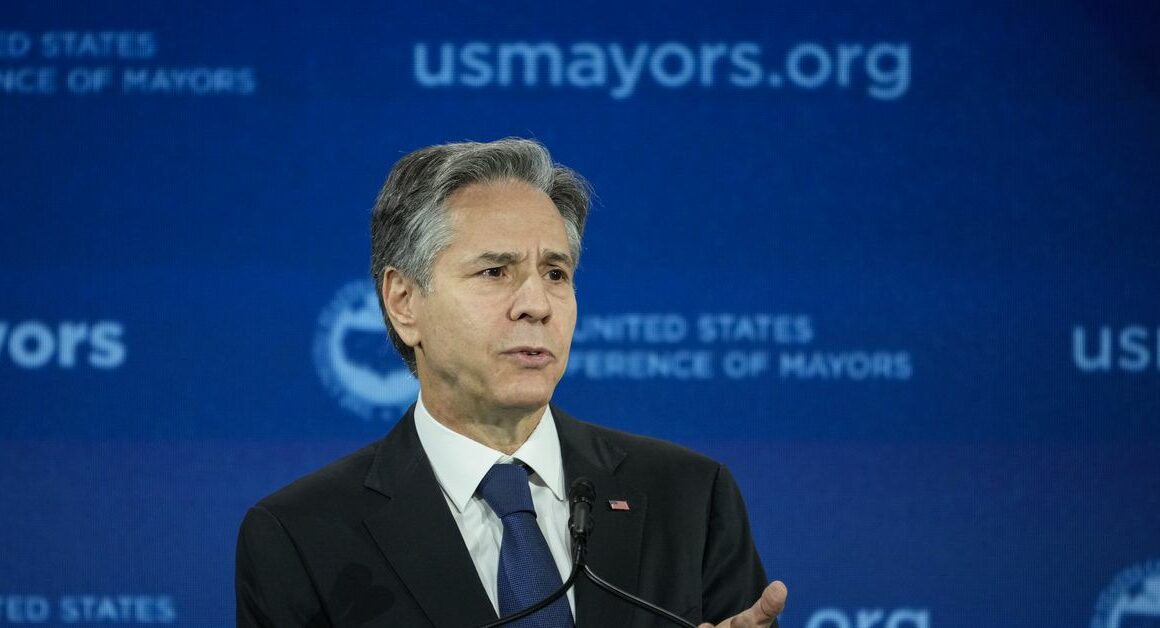
Secretary of State Antony Blinken postponed a meeting with President Xi because of a Chinese surveillance balloon in US airspace.
If you want a sense of how fraught US-China relations are, consider this: a balloon just derailed a diplomatic summit.
Okay, not just any balloon — a surveillance balloon that belongs to the People’s Republic of China, and is currently drifting through US airspace. Its presence has led to Secretary of State Antony Blinken indefinitely postponing a planned meeting with Chinese President Xi Jinping.
The Chinese government has confirmed the balloon is theirs, though it claims it’s “mainly civilian” and studying the weather. The wind, China says, blew the balloon off course, which sounds like a thing that happens to balloons, except, these must have been very specific winds that just happened to carry the balloon over some “sensitive sites,” as the Pentagon put it. Specifically, the balloon was spotted in Montana, which is home to one of three nuclear missile silo fields. The Pentagon has also said the balloon is “maneuverable.”
Which is why the US apparently rejects China’s innocent explanation and has called the presence of the balloon in US airspace “a clear violation of our sovereignty, as well as international law, and it is unacceptable that this has occurred.”
The US also nixed this highly anticipated meeting between Blinken and Xi in Beijing, a sign of just how fragile the relationship between Beijing and Washington is right now. There have been spy balloons before, and there are more stealth ways to surveil and spy — which everyone, the US included, is doing. But this one slow-moving setback has derailed even the most basic efforts at dialogue. Add to that the US political jockeying over the Biden administration’s China policy, and of course, this balloon thing would, well, blow up.
The spy balloon is still hanging out over the US, but this isn’t the thing you should worry about
Right now, the balloon is still over the United States at an altitude of about 60,000 feet. (For reference, planes fly at about 35,000 feet.) The surveillance equipment alone is about the size of two to three school buses, officials said, with the balloon part being even bigger. Pentagon officials said Friday it’s “somewhere over the center” of the country, heading east, and they expect it to hang around for another few days.
The Pentagon has said it is not a military or physical threat, and a senior defense official said in a briefing Thursday that, based on what the US can tell, “it does not create significant value added over and above what the PRC is likely able to collect through things like satellites in Low Earth Orbit” — that is, Beijing is not really getting the good stuff. The US is still taking additional steps to lock down information, but has said it has ruled out shooting it down because the resulting debris could cause even more damage than the balloon itself.
But the US’s firm response, and China’s likely obfuscation, show just how unstable this relationship is. Neither Washington nor Beijing has a clear sense of how to communicate or deconflict, and doesn’t even have many channels to regularly practice doing so. That ambiguity makes a miscalculation or an escalation more likely. As China seeks to build its power abroad, and the US seeks to contain or restrain it, the possibility of close calls or misunderstandings will build with it. And not every miscommunication might be so low-stakes. This was a slow-moving balloon, after all, not, say, a near-collision of military aircraft.
This is exactly what Blinken’s trip to Beijing was supposed to help fix. His visit was meant to stabilize the relationship and build off the November summit between Biden and Xi in Bali that at least offered a glimmer of hope that the two powers wanted to find ways to engage. A senior state department official said in a Friday briefing that it had no timeline to reschedule Blinken’s trip, but that the US felt if Blinken went to Beijing now, “it would have significantly narrowed the agenda that we would have been able to address.” In other words, they’d just talk about the spy balloon, like everyone else.
The polarized US domestic climate is also complicating this. Biden, like his predecessor Donald Trump, has maintained pretty hawkish policies on China, including keeping Trump tariffs in place; curbing the sale of semiconductor technology and getting allies and partners to do the same; and continuing to strongly back Taiwan.
Still, Republicans, in particular, have accused the Biden administration of being insufficiently tough on China. Many leaders seized on the balloon incident as an example of the administration’s failings. “China’s brazen disregard for U.S. sovereignty is a destabilizing action that must be addressed, and President Biden cannot be silent,” Speaker of the House Kevin McCarthy tweeted.
The growing hawkishness toward China is clouding the US’s reality and foreign policy response. As long as the US sees China as a threat — and a direct threat to the United States — then a seemingly low-stakes spy balloon can become a national security crisis. There are legitimate security concerns about China’s surveillance tactics, and what it is doing with the information gathered — but honestly, the Chinese Communist Party doesn’t need a balloon for that, just maybe your cellphone.
None of this bodes well for any easing of tensions between the US and China, and this incident shows that, right now, Washington and Beijing are struggling mightily to make those tensions more predictable and manageable.
